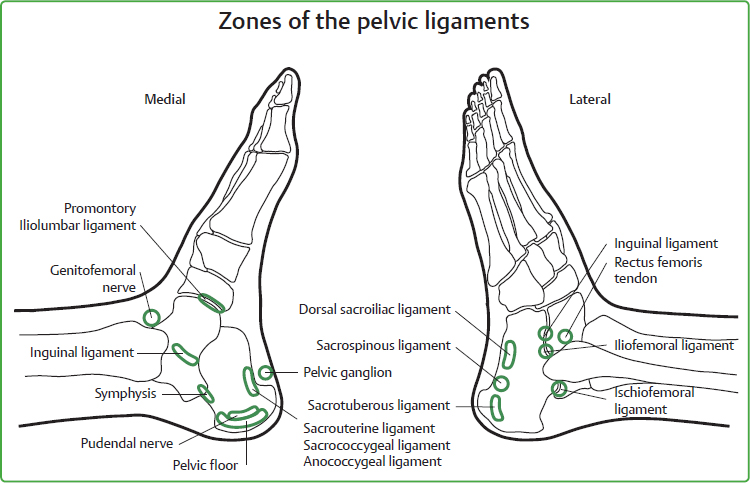27 Zones of the Pelvic Ligaments Pelvic ligaments, like fasciae, cartilage and bone, mainly comprise collagenic connective tissue and are for the connection, stabilization, and mobility of the skeletal and organic structures of the pelvis. Walter Froneberg (Fig. 27.1) developed the zones of the pelvic ligaments in the early 1980s based on the principles of our courses. They were later supplemented and modified by personal experiences. At the beginning their use was limited to skeletomuscular stresses on the pelvis, but it soon became apparent that they had a much broader range of indications. • Skeletomuscular strains such as pelvic misalignment, lumbago, complaints of the cervical spine, slipped disk, scoliosis, coxarthrosis and gonarthrosis, shoulder-arm syndrome, epicondylitis • Chronically cold feet, venous, arterial, or lymphatic congestion of the legs and pelvis • After operations in the abdominal area and pelvis, on the legs once wound healing is complete • Functional and organic disturbances of the organs of the lesser pelvis such as menstrual and menopausal symptoms, fallopian tube adhesions, prolapse complaints; prostate problems, sterility, impotence • Physical imbalance, mental and emotional instability • Migraine, tension headache, tinnitus • Jaw and temporomandibular problems, for example, in those who wear braces or have malocclusion, nocturnal tooth-grinding (see Fig. 21.5 similarity in shape between jaw and hip joint). • Recent operations in the pelvic-abdominal area • Inflammations in the pelvic-abdominal area
27.1 Indications
27.2 Contraindications
Musculoskeletal Key
Fastest Musculoskeletal Insight Engine








